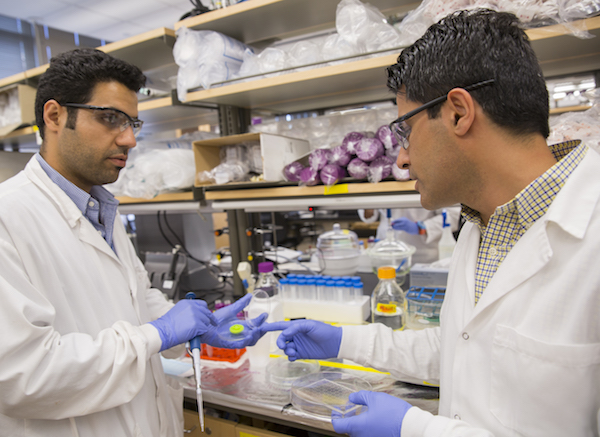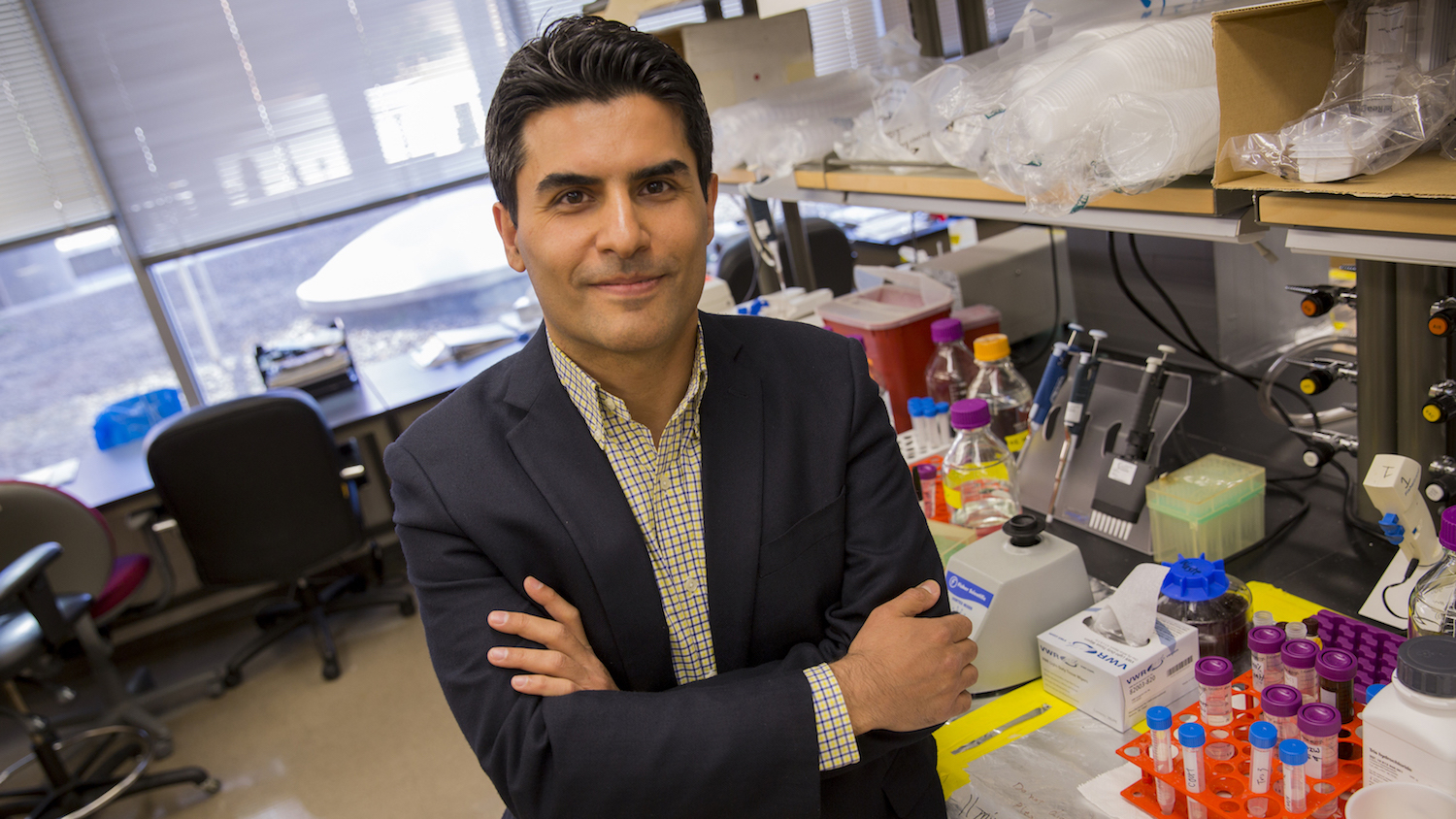Organ-on-a-chip has been a flourishing field in biomedical engineering in recent years. Researchers create microengineered chips — such as lung-on-a-chip, artery-on-a-chip and kidney-on-a-chip — that behave like human organs. These chips simulate the biological activities of a specific organ, making them ideal for studying the organ’s behaviors and for performing drug screening studies.

“Imagine what we can learn from a heart tissue model that lives outside of the body and is capable of replicating what the heart experiences during a heart attack,” says Assistant Professor Mehdi Nikkhah (right). Photographer: Jessica Hochreiter/ASU
But Assistant Professor Mehdi Nikkhah is encouraged by the possibility of taking microengineered chip research in a slightly different direction. Rather than creating a heart-on-a-chip to understand the function of the heart, what if researchers could create a heart attack-on-a-chip to better understand the disease that is a leading killer in the United States?
The National Science Foundation is encouraged by Nikkhah’s vision and is supporting the effort with a CAREER Award totaling $500,000 over the next five years.
Currently, there is a significant shortage of available donor hearts relative to the demand for transplant surgery among heart attack patients. In order to develop treatment or therapies that don’t rely on donations, it is essential to better understand the biological aspects that underlie the condition.
“Imagine what we can learn from a heart tissue model that lives outside of the body and is capable of replicating what the heart experiences during a heart attack,” says Nikkhah, describing his vision for the microengineered chip. “If we can understand the biology better, then we can develop better therapeutic treatments.”
This research could grow to include the possibility of mimicking other types of diseases, such as arrhythmia. As a high schooler in Tehran, Iran, Nikkhah says he always dreamed he would become a doctor.
“I was fascinated with the idea of saving lives,” he says.
When he discovered the field of biomedical engineering and enrolled in his master’s program he felt that his childhood ambition could still be realized.
“I go to a lot of hospitals these days to meet with research collaborators and physicians. I’m not always working directly with patients, but I do interact with their family members,” says Nikkhah. “I frequently pass by the emergency room and the work of healthcare is my passion, and these experiences touch me.”
Nikkhah believes his research was notable to the National Science Foundation for a few reasons. He says the novelty of creating the first heart attack on-a-chip was certainly noteworthy.
“Lots of proposals can be innovative, but we were also detailed,” says Nikkhah, who works closely with cardiologist Dr. Raymond Migrino from the Phoenix VA Medical Center.”
This collaboration enabled me to be very specific about the biological details of the proposal,” says Nikkhah.
In addition, Nikkhah finds the education and outreach aspect of his work highly motivating, and it was well-detailed in his proposal. He worked with Tirupalavanam Ganesh, associate research professor and Assistant Dean of Engineering Education, for two years to define the outreach component of this research, which includes the creation of summer workshops for high school students — many of them from underrepresented groups — to come work in Nikkhah’s lab.
“An important part of this research effort is the opportunity to educate young students on the biological fundamentals of heart diseases and how technologies can come to the rescue,” says Nikkhah.






































